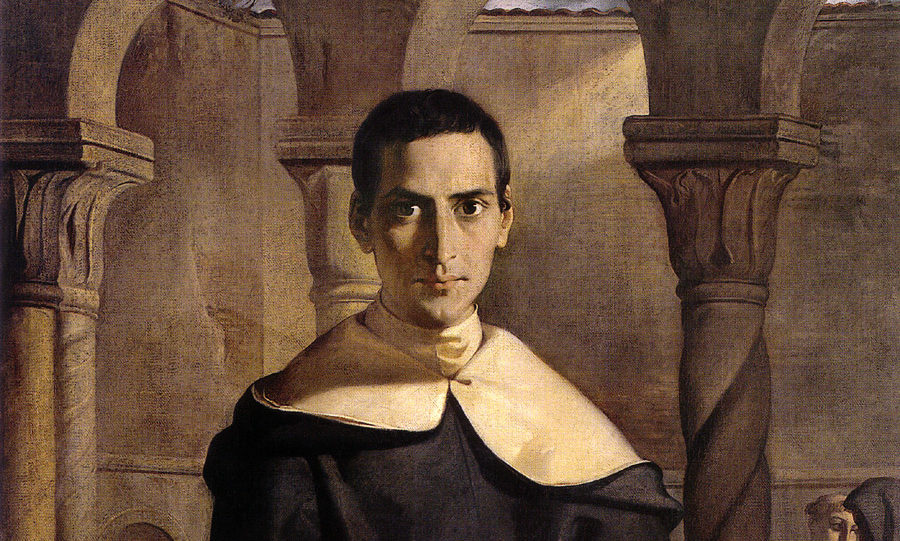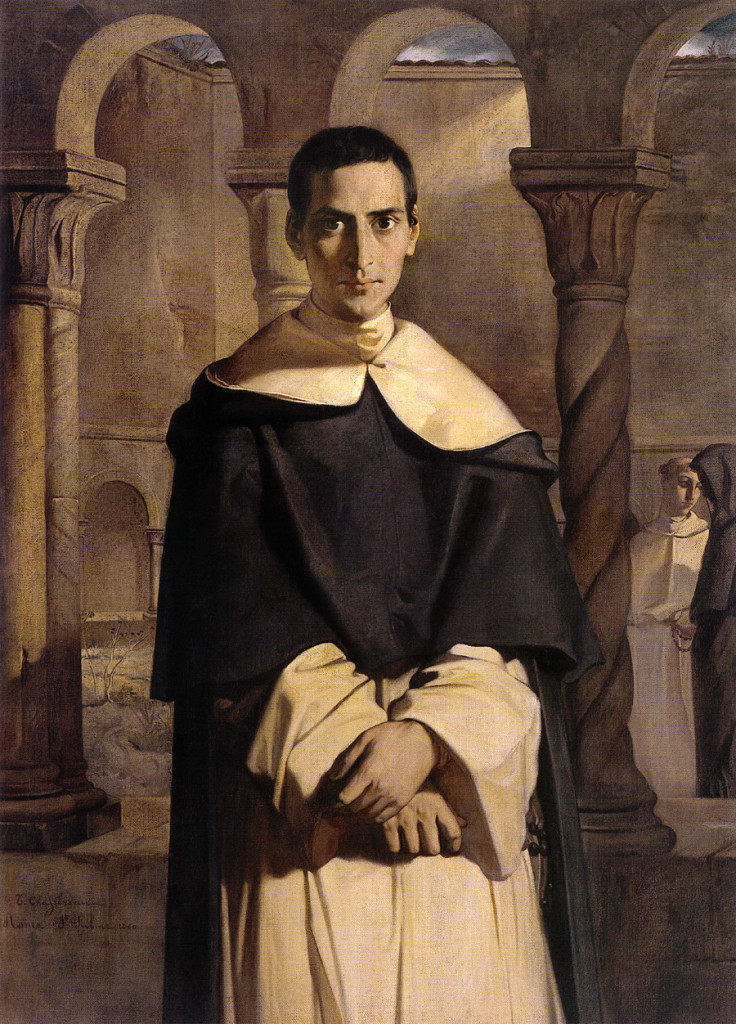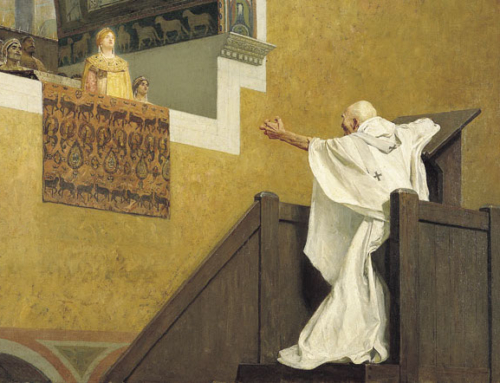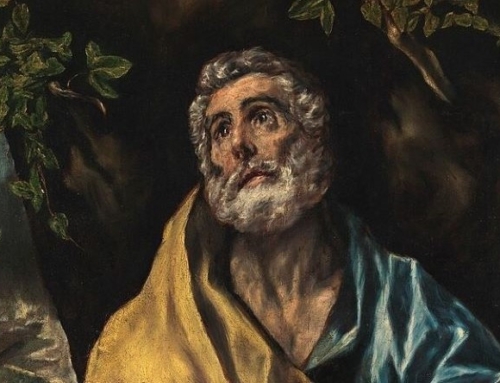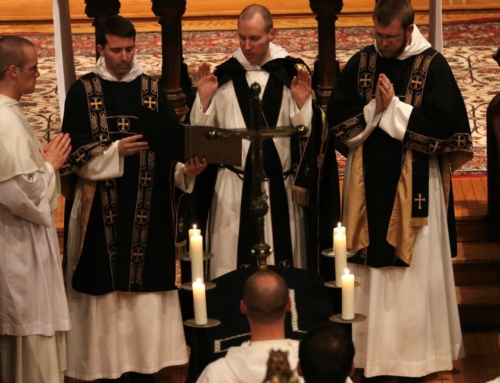If the Catholic Church, and the Dominican Order, ever looked dead, it was at the turn of the 19th Century. In the wake of the French Revolution, the Church had been banned in many parts of Western Europe, thousands of Catholics had been martyred for their faith, religious orders had been outlawed, and the Pope had recently died in captivity under Napoleon. Swept up with the ideals of the Enlightenment, the Western world had declared herself to have progressed beyond the supposed naïveté and superstition of Christianity. Nowhere was this more dominantly witnessed than in France, where only a generation before Voltaire had stated, “The truths of religion are never so well understood as by those who have lost the power of reasoning.” Yet, within another generation, the French people had begun to return en masse to the Catholic Faith. So what changed? While the short answer would be “grace,” the details are varied and complex. Yet one figure who possibly best represents the reconversion of France is the Dominican preacher, Père Henri-Dominique Lacordaire. Lacordaire sought to reintroduce to France the Faith that had been dismissed in revolutionary fervor. In a society that claimed it wanted to be based on reason and freedom, Lacordaire preached that not only was the Christian Faith eminently reasonable, it was the only way to find the true freedom that man longs for in every age.
He was born Jean-Baptiste Lacordaire in 1802, two years before Napoleon became “Emperor of the French” and was formed in the liberal ideals of his age. As a child he was noted for his aptitude in studies and eventually became a lawyer. Disillusioned with some aspects of his contemporary society, however, he reconverted to the Catholic Faith in 1824 which he had abandoned as a youth. Shortly thereafter he entered seminary and was ordained a priest in 1827. While he longed to go to America to serve the rapidly expanding immigrant Catholic population, Providence had other plans for him. Introduced to different Catholic intellectual movements which had sprung up in the wake of the Revolution, he began to associate himself with some of the brightest Catholic luminaries of his time. Eventually, Lacordaire became a famed preacher and writer in his own right, destined to become the most widely regarded orator of his generation.
In 1830, he became a writer for the French Catholic periodical, L’Avenir, which advocated for a place for Catholicism within the post-Revolutionary world. They argued for universal freedom of religion and the freedom of Catholic presses to distribute their material. Yet these ideals did not have the grand success many hoped they would. French bishops eventually became suspicious of some aspects of their work–including asserting the strong primacy of the Roman Pontiff over the French Church—and recommended their condemnation. Pope Gregory XVI himself eventually condemned some of their more innovative positions. While some of Lacordaire’s associates refused to submit and eventually left the Church, he was quick to acknowledge his error. After this, his stature continued to grow throughout France as an example of the possible return of Catholic vibrancy after a generation of oppression.
A Great Idea Extinct?
In Advent of 1843, Lacordaire ascended the winding steps of the pulpit at the Cathedral of Notre Dame. About eight years earlier, he had given a series of conferences there which, by all accounts, were a roaring success—reports state that they averaged over 6,000 attendees per conference. The conferences were aimed at teaching the Faith again to a country that had lost it in the Revolution. But this time was different. In 1836 Lacordaire had left France in order to further his education in Rome. While there, he had met the Dominican Order and joined their number. After formation, he returned to France with the expressed aim of restoring the Order in his home country. And did the Dominicans ever need restoring—they had gone from over 20,000 friars in 1789 to less than 5,000 a generation later. Around this time, one John Henry Newman became interested in religious life. Finding the Order much diminished in Europe, he wondered if it was not “a great idea extinct.”
Yet, Lacordaire did not seek to resurrect a nearly extinct religious order simply for the novelty of it. Nor was he against the liberal egalitarian ideals of the revolutionaries. He too was a self-avowed proponent of liberté, égalité, et fraternité. It is reported that shortly before his death he told a confrere: “I die a repentant religious, but an unrepentant liberal.” Lacordaire believed that the desires for true freedom were fundamentally good, but that they could only be fulfilled in Christ. Figures like Voltaire were not the enemy, but misguided and a source for confusion. Faith did not destroy the rational capacities of the believer, but could be a source for greater insight into reality. He sought to show the modern world that Christianity was both true and in accord with what they sought.
There is something eminently Dominican about Lacordaire’s project. Though the Church exists as a unity, there are certain attributes which have found specific incarnation in particular Orders or associations. While the call to holiness is universal, it has been (and is) lived out in a variety of ways. Holy Poverty seems to be forever entwined with St. Francis and the Franciscan Orders. The coenobitic life in the West is perpetually influenced by the example and teaching of St. Benedict. Similarly, there is a particular grace which St. Dominic incarnated. It is the grace of a life spent serving the Church in study and contemplation. Or as Guy Bedouelle, O.P., identified it in the title of his magisterial biography, St. Dominic exemplifies the “grace of the Word”. This grace—continued especially through the Order he established—is found in a life rooted in study and contemplation. The Dominican Order has sought to live this form of life and preach the Gospel in every age.
This preaching has taken on many forms. However, there seem to be specific types of preaching that are particularly Dominican. Trained in study and prayer, Dominicans have had a special responsibility to teach and explain the Faith, including its reasonableness. Beginning with St. Dominic famously spending the night discussing the Faith with an innkeeper, Dominicans have been some of the Church’s most famed apologists, or defenders of the reasonableness of Faith. Practiced from a position of authority, Catholic apologetics seeks to protect the faith of believers and refute the criticism of doubters. While the practice of apologetics has lost its appeal in contemporary theology, it remains a valuable tool and something connatural to the Dominican vocation. During this Jubilee year of the Order of Preachers, I would propose that Lacordaire’s work as an apologist within the context of the Dominican tradition be a guide to us all.
An Apology for Dominican Apologetics
In Book 1 of the Summa contra Gentiles, St. Thomas Aquinas discusses the mode of inquiry taken up in theological study. He distinguishes two types of truth which the theologian seeks to understand. The first is that which unaided reason can know on its own. These arguments have demonstrable proof, and demand assent from all who understand them. Arguments like these, such as the proofs for the existence of God, or that 2+2=4, can be carried out without the light of faith. The second type of truth is that which surpasses reason and is only known by faith. These truths are above our natural capacities of understanding and we rely upon God’s revelation to know them.
There can be a temptation then to believe that truth is somehow divided and separate: that there is a truth of reason and a truth of faith. These two truths propose different ideas and are accepted variously. Faith becomes opposed to reason, and thus becomes the enemy of a supposedly rational people. Only a generation before Lacordaire, the Cathedral of Notre Dame had been desecrated by the revolutionaries and turned into the “Temple of Reason.” The scene must have been striking. It represented the supposed fall of religion, having been overcome by pure and unfettered reason.
Yet, for St. Thomas, this presents us with a false dichotomy. Faith and reason are not fundamentally opposed, but rather two sources to gain true knowledge. Both come from one source, God. Truth is twofold only for us, by our manner of coming to know it. Yet truth is fundamentally one, for it has one source, God. God is the source for all truth, whether we come to know it by natural abilities or as inspired by Faith. As truth has one source, no two truths can ever contradict each other. A truth of faith can never be contradicted by a truth gained through reason, nor vice versa.
Thus, Voltaire’s critique of the unreasonableness of Christians is itself against truth. Faith elevates what we can know. St. Thomas argues further in the Summa contra Gentiles that it is most unreasonable to assert that we cannot assent to truths which are above reason. We are not the arbiters of Faith, but trust in the inner coherence of the unity of the created world. While some Christians have certainly been guilty of denying rational truths, the real task remains to show the compatibility between Faith and reason. Lacordaire presents us with an example of how this should be done.
In an age not unlike ours, where men seek first to be free, Lacordaire came proclaiming that it was only in God that one could achieve real freedom. This is attained in being released from real bondage. The world was, and remains, captive to sin. What the Incarnation brought was redemption, merited by the blood of Christ. In order to have true freedom, the dream of the Enlightened world, one first needs salvation. Lacordaire showed that only in Christ would the modern ideals, correctly understood and moderated, ever be achieved.
While apologetics as a subject might not be particularly popular today, it still has a place in Catholic theology. Lacordaire provides us an example of how this can be carried out. There are some foundational principles which we can learn from him.
First, good apologetics address the questions that people are really asking in a mode that they understand. In an age like ours, where men seek first to be free, Lacordaire came proclaiming that it was only in God that one found true freedom. It was not “a law of bondage” that some had claimed. He also used numerous external references to history, psychology, philosophy, poetry, and literature to illustrate his points to his own particular audience. A good apologist has to meet people where they are, speaking in a way they can understand, answering the questions people are asking. Dominicans seem uniquely qualified to respond to such questions. A life lived both in prayer and study, as well as in an apostolate, allowed Lacordaire to best confront the issues of his time.
Next, apologetics done rightly show that answers to life’s deepest questions can only be found in the Catholic Church. This is what we preach to a world looking for redemption. Lacordaire gave his orations with expressiveness and enthusiasm, emphasizing that values familiar to his own day and age: liberty, equality, fraternity, patriotism, self-giving, and a sense of sacrifice, could only be truly achieved within the Catholic Church. As he argued, “The Church had the words reason and liberty on her lips when the inalienable rights of the human race were threatened with shipwreck.” Finally, perform apologetics from a position of charity and humility. Nothing is more off-putting to modern man than a position of assumed authority. Again, Lacordaire: “Real excellence and humility are not incompatible one with the other, on the contrary they are twin sisters.” We have to show that we too are pursuing truth, like all people, and that we want to find it with them. The Catholic Church has provided us with answers, and we merely want to share them.
A Model for the New Evangelization
So what happened to Lacordaire? His conferences at Notre Dame were well received despite thinly veiled threats against his life by the King, and his fame steadily grew throughout France. After the revolution of 1848, without his campaigning, he was even elected to the French parliament. However, in his attempt to rise above political parties, and, in his words, “preach the great truths of the Gospel to all factions,” he was rather unsuccessful. He resigned two weeks after taking office. Furthermore, his efforts in the Dominican Order encountered numerous setbacks, both from within and without. Yet, by the time of his death the Catholic Church and the Dominican Order in France were flourishing again.
I think Lacordaire’s example here is of great value in two ways. First, no matter how bad we think things may be, Christ still comes to redeem us. Lacordaire was given the grace to help bring the Faith back to a country that had been massacring nuns in the streets. It can be tempting to view one’s own era as being unique, but just look to history. The Church has always been persecuted, but the Christian is called to proclaim that the world has an authority greater than any human government. And that authority became man 2,000 years ago in order that we might have true life and freedom in his saving power.
Second, Lacordaire gives us an example of what the New Evangelization should look like. His talks are not heavily theological, but more inviting and apologetic. With regard to his conferences at Notre Dame he stated: “It seemed to me that we should not go to metaphysics, nor history, but set foot on the soil of the living reality and seek traces of God.” He re-presented a good that had been rejected. People could see all around them how efforts to organize society without God always end with dissatisfaction and craziness. Lacordaire was able to show them, on their own terms, how to find what they were truly after.
On a personal note, I first became interested in Lacordaire when I was in France several years ago. In the Louvre, in the wing containing many of the most famous pieces from the time of the Revolution, is a portrait of Lacordaire. He was placed at the end, at the far side of the hall. He is portrayed standing upright, arms folded, wearing his outlawed Dominican habit, and looking out confidently. It is almost as if he is placed to watch over the rest of the excesses of the revolutionary age. He came calling his people back to the truth of the Gospel and faith in Christ Jesus. It seems fitting to give him the last word:
Let us all stand together, whoever we may be, believers and unbelievers. Let us stand up, believers, with feelings of respect, admiration, faith, love, for a God who has revealed himself to us with so much evidence, and who has chosen us among men to be the depositaries of that splendid manifestation of his truth! And you who do not believe, stand up also, but with fear and trembling, as men who are but as nothing with their power and their reasoning, before facts which fill all ages, and which are in themselves so full of the power and majesty of God!
To download a printable PDF of this Article from
Dominicana Journal, Summer 2016, Vol. LIX, No. 1, CLICK HERE.

